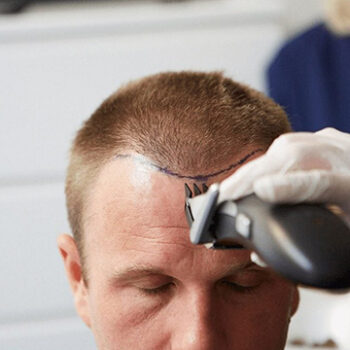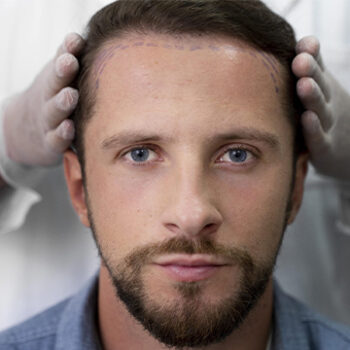Comprehensive Guide to Hair Transplantation
Hair transplantation is a modern aesthetic procedure that offers a permanent solution to hair loss and baldness. When performed by experienced specialists using the right techniques, it delivers natural and satisfying results. This comprehensive guide covers the entire hair transplantation process, techniques used, benefits, and everything you need to know.
1. What is Hair Transplantation?
Hair transplantation involves transferring healthy hair follicles, usually from the back or sides of the scalp (donor area), to areas experiencing hair loss or baldness. This procedure aims to provide a long-lasting solution to hair thinning.
2. Who is Suitable for Hair Transplantation?
Hair transplantation is ideal for individuals who experience:
- Male pattern baldness (androgenetic alopecia),
- Female pattern hair loss,
- Hair loss due to burns, scars, or trauma,
- Sufficient donor hair for transplantation.
Note: A thorough health evaluation is necessary to determine suitability, particularly for individuals with chronic illnesses or active hair loss.
3. Hair Transplant Techniques
Modern hair transplantation employs several advanced techniques, including:
3.1. FUE (Follicular Unit Extraction)
- Hair follicles are extracted individually using a micro-motor or manual tools.
- Leaves minimal scarring and has a shorter recovery time.
- Delivers natural-looking results.
3.2. DHI (Direct Hair Implantation)
- Uses a specialized implanter pen to place hair follicles directly into the scalp.
- Allows for denser hair implantation.
- Offers a quick recovery process.
3.3. Sapphire FUE
- An advanced version of FUE using sapphire-tipped tools for more precise incisions.
- Minimizes scarring and ensures natural results.
3.4. Robotic Hair Transplantation
- Uses robotic technology for extracting and implanting hair follicles.
- Reduces error and shortens procedure time.
4. The Hair Transplantation Process
4.1. Initial Assessment
- A specialist evaluates your hair loss and analyzes the donor area.
- The size of the transplant area is determined.
4.2. Pre-Operation Preparation
- Health tests and evaluations are conducted before the procedure.
- Smoking and alcohol consumption should be avoided prior to surgery.
4.3. The Procedure
- The procedure is typically performed under local anesthesia.
- The duration ranges from 4 to 8 hours, depending on the number of grafts.
4.4. Post-Procedure Recovery
- Rest is recommended for the first 48 hours.
- The first wash is performed 2-3 days after the procedure by specialists.
- Scabs typically fall off within a week, and the scalp begins to look more natural.
5. The Post-Transplant Period
The post-transplant phase requires patience and care. Key points to consider:
- Shock Hair Loss: Temporary shedding of transplanted hair may occur during the first month. This is a normal part of the process.
- New Hair Growth: New hair begins to grow after 3 months, with results becoming noticeable within 6-12 months.
- Care Products: Use special shampoos and lotions recommended by your doctor.
- Sun Protection: Avoid direct sunlight for the first few weeks.
6. Benefits of Hair Transplantation
- Permanent Solution: Hair transplantation provides a long-term solution to hair loss.
- Natural Appearance: When performed correctly, the transplanted hair blends seamlessly with natural hair.
- Your Own Hair: Donor follicles are from your own body, minimizing the risk of rejection.
7. Risks and Complications
Like any medical procedure, hair transplantation carries some risks, including:
- Infection,
- Bleeding or swelling,
- Irregular hair growth if the follicles do not take.
However, these risks are rare when performed by an experienced team in a sterile environment.
8. Choosing a Clinic
When selecting a clinic for hair transplantation, consider the following:
- Expertise and experience of the specialists,
- Techniques offered,
- Clinic’s sterilization standards,
- Patient reviews and references.
9. Cost of Hair Transplantation
The cost of a hair transplant varies based on factors such as the number of grafts, technique used, and the clinic’s location. Focus on the clinic’s experience and success rates rather than opting for the cheapest option.
10. Frequently Asked Questions About Hair Transplantation
1. Does hair transplantation hurt?
The procedure is usually painless, as it is performed under local anesthesia. Mild discomfort may occur after the operation.
2. When will results be visible?
Full results are typically visible within 12 months. New hair starts growing after 3-6 months.
3. Will the transplanted hair fall out?
Transplanted hair follicles are permanent and will not fall out. However, natural hair may continue to thin over time.

 English
English Français
Français Deutsch
Deutsch Türkçe
Türkçe 中國人
中國人



































